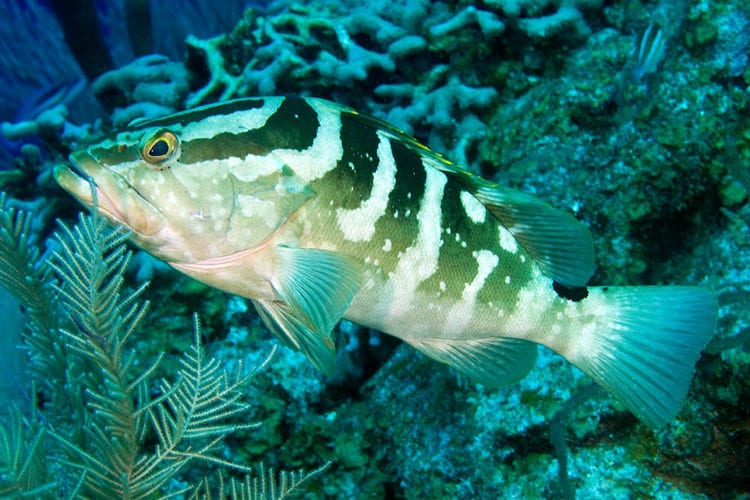Current work in wildlife, rivers, public lands, and climate
Press Releases
Aquatic critical habitat proposed for threatened Nassau grouper
The proposal is the result of a 2020 lawsuit by the Center for Biological Diversity, WildEarth Guardians and Miami Waterkeeper. The Nassau grouper used to be one of the most common groupers in the United States, but overfishing has contributed to a 60% population decline in recent years. In 2016 the National Oceanic and Atmospheric Administration listed the grouper as threatened under the Endangered Species Act in response to a WildEarth Guardians scientific petition.
“I’m glad Nassau groupers are poised to get the habitat protection they badly need to thrive again,” said Catherine Kilduff, an attorney at the Center for Biological Diversity. “These fish are a sign of healthy reefs and ocean ecosystems, and making sure the Nassau grouper can flourish helps secure clean water, living corals and robust seagrass beds. Now we also need to ensure they’re protected from climate change’s growing threats.”
Nassau groupers reproduce only in big groups called spawning aggregations, consisting of hundreds, thousands or — historically — tens of thousands of fish that simultaneously return to the same locations for decades. The federal critical habitat proposal protects those marine spawning sites, as well as coral reef systems where the grouper’s larvae settle and grow, and areas with rock and old coral structures that young groupers use for protection as they mature.
The Endangered Species Act prohibits federal agencies from authorizing activities that would destroy or harm a listed species’ critical habitat. Species with federally protected critical habitat are more than twice as likely to recover as species without it.
“Critical habitat designations offer one of the most effective means of protecting imperiled species and their habitat,” said Lindsay Larris, wildlife program director at WildEarth Guardians. “Protecting habitat for the Nassau grouper will be key to ensuring this fish’s survival and true recovery in the future.”
The Nassau grouper is native to South Florida and the Caribbean, including the U.S. Virgin Islands and Puerto Rico. Poor water quality and increased sedimentation due to land-development practices threaten both coral and macroalgae that are important resources to the grouper throughout its life stages. Coral reefs are also acutely threatened by climate change impacts such as sea-level rise and ocean acidification.
“Nassau groupers, like thousands of other species, are dependent upon a healthy coral reef ecosystem to survive,” said Rachel Silverstein, Ph.D., the Miami Waterkeeper. “With coral reef habitat rapidly disappearing, we are very pleased that the agency has taken this step to support this species’ recovery.”
Areas in Florida proposed for critical habitat include Biscayne Bay and Atlantic waters near Key Largo, Marathon, Big Pine Key to Geiger Key, and Key West. Waters in the Gulf of Mexico near New Ground Shoal, Halfmoon Shoal and certain areas off the Dry Tortugas are included.
The two areas with spawning aggregations are west of Puerto Rico and south of St. Thomas. Nearshore waters around St. Croix, St. Thomas, St. John and Navassa Island are also included. The critical habitat includes nearshore waters on the eastern coast and southwestern coast of Puerto Rico, plus Desecheo Island, Isla de Mona, Vieques Island and Isla De Culebra in Puerto Rico.

Nassau Grouper. Photo by NOAA Fisheries.